|
|
|
|
|
|
|||||||||||||||||||||||||||||||||||||||||||||||||||
|
I’m a fan of Infinity speakers. A BIG fan. In my mind, during their heyday Infinity produced some of the finest speakers ever made. If the only Infinities you’ve heard are the mass-market junk at Circuit City, then you haven’t heard good Infinities. Here’s my collection of vintage Infinity speakers (this page is a work in process). I still have a few Infinities I really want to complete my collection, but here’s what I have right now. This page is just Infinity speakers; to see other Infinity products, go here. |
|||
Servostatik I |
|||
|
The Servostatik was Infinity’s first speaker. It was originally developed in a garage by Arnie Nudell, Cary Christie, and John Ulrick. Arnie and John were aerospace designers for Litton in Southern California. It was a unique design for the time in that it used a servo controlled 18” woofer from Cerwin Vega (massive, as you can see by the Coke can in the picture below). The system consisted of two electrostatic panels for the highs and midrange, a separate bass commode, and an Infinity designed crossover/bass amp. |
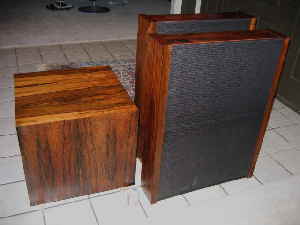 |
||||||||
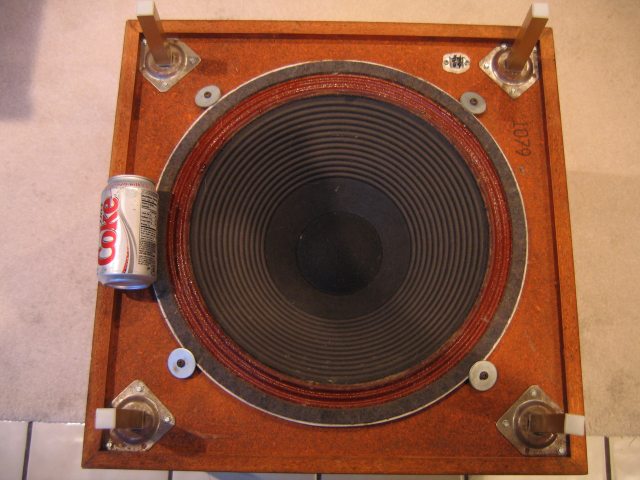 |
||||||||
|
Here it is, set up at home. The black panel on the left is one of the electrostatic panels. Behind it is the bass commode with the amp/crossover on top. Despite being nearly 40 years old, this is one amazing speaker system. |
||||||||
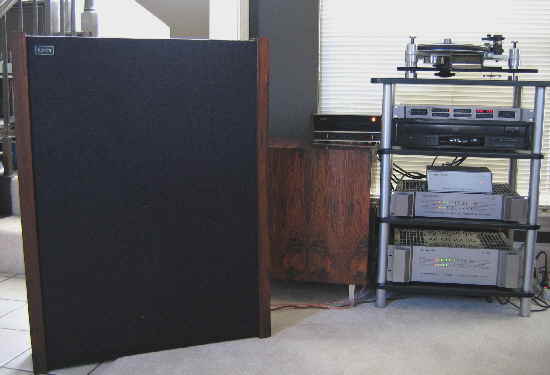 |
||||||||
2000 A |
||||||||
|
Introduced after the ServoStatik, the 2000 A was an attempt to make a smaller, less expensive speaker that retained the excellent high end of the electrostatics. Using a conventional cone woofer and midrange, and electrostatic tweeters, the 2000 A is actually a very nice speaker in a more compact package. Infinity was obviously experimenting a lot on this design, as I have seen versions with both two and four of the RTR electrostatic tweeters, and both with and without whizzer cones on the midranges. Mine use the four electrostatic tweeters and the whizzer cone midrange: |
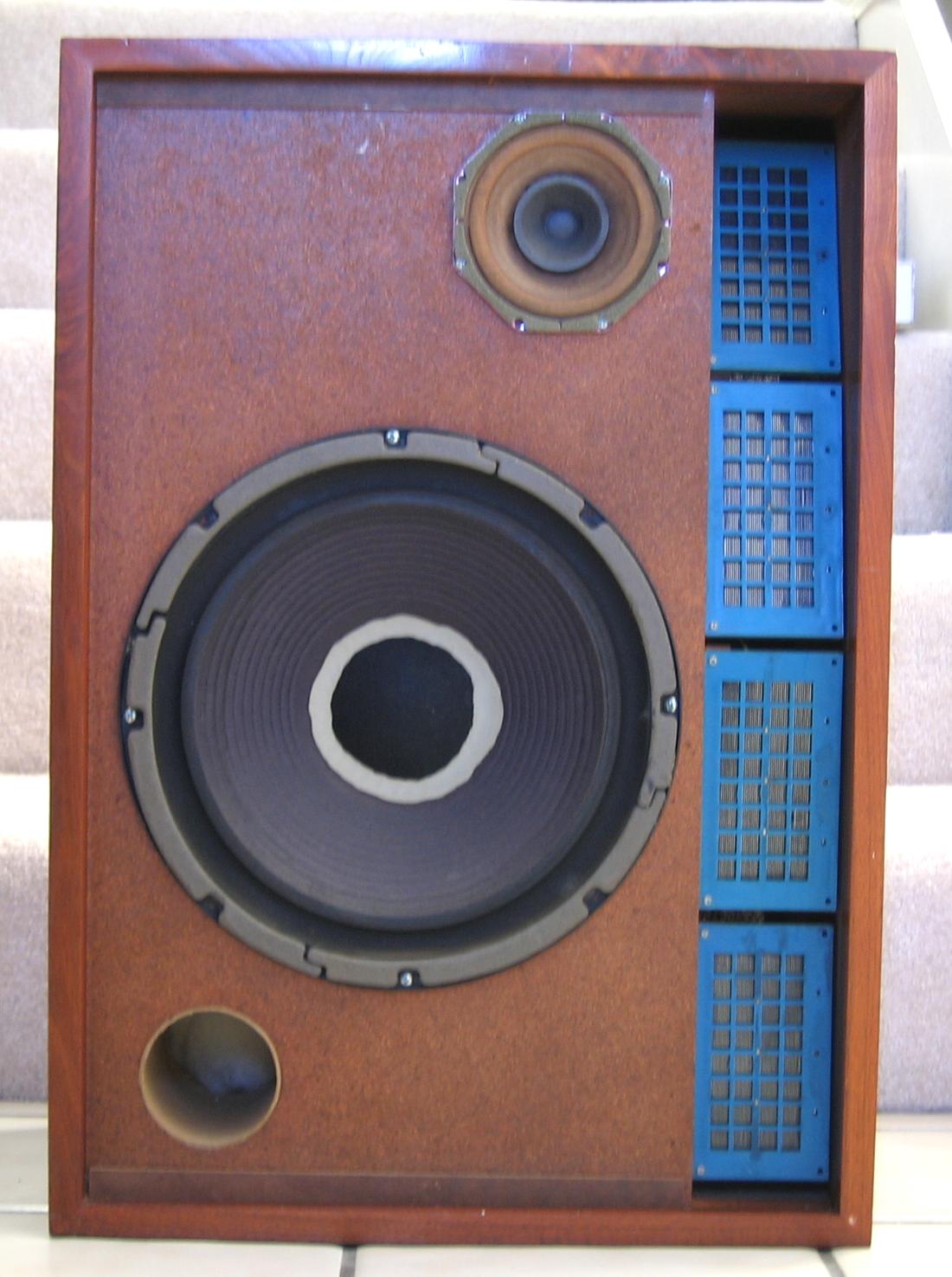 |
|
Following the 2000A, Infinity produced several variants replacing the electrostatic tweeters with the Walsh tweeter, including the 2000 II and 2000 AXT. I have a 2000 II but it is currently undergoing restoration. For a brochure on the 2000 II , click here. |
WTLC |
|
Most of my Infinities are pretty big. With the WTLC, I decided to take a walk on the small side. The name stood for “Wave Transmission Line Column”. The WTLC was produced in 1976, and was another step in the Infinity evolution. It replaced the electrostatic tweeters with the Walsh tweeter, which looked sort of like a metal ice cream cone, to give 360 degree dispersion, and reverted to conventional cone drivers for the rest. The one other unique feature to the WTLC was the use of two woofers - one facing forward, and one downward firing. Despite being a pretty small speaker, it really sounds terrific. For a brochure on the WTLC, click here. |
|
|
||||||||||||||||||||||||||||||||
Quantums: QLS & Quantum 2 |
|
Introduced in 1976, the Quantums were the next big leap forward for Infinity, with the introduction of the EMIT tweeter. The top of the line was the Quantum Reference System, followed by the Quantum Line Source (QLS), and then a whole sequence of numbered Quantum models, from 2 to 5. The Quantum family shared a basic design philosophy of using EMIT tweeters, dome midranges, and Watkins woofers. The different models combined different numbers of each of those elements, depending on the size and price point. The larger models included a mid-bass coupler as well. I have both the QLS and the Quantum 2, the next model down from the QLS. For a brochure on the QLS, click here. For a brochure on the Quantum 2, click here. For a brochure on the EMIT tweeter, click here. |
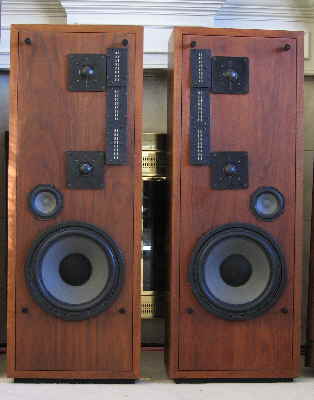 |
|||
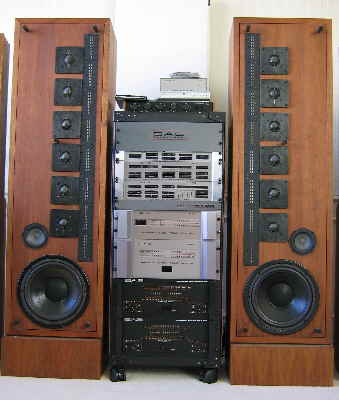 |
|||
|
|
||||||||||||||||||||
|
Here are some more small speakers. Infinity really hit the mark with the original InfiniTesimals - using a single EMIT tweeter and a Watkins woofer (!) in a compact package. Despite being small, don’t let them fool you - they weigh a ton and sound fantastic. If you are looking for a great, full range speaker that doesn’t take up much space, these are for you. They are one of the few Infinity speakers that routinely sell for more now than when they were new, 30 years ago, and there’s a reason - they’re keepers. (Don’t confuse these with the later InfiniTesimals, which aren’t in the same league - these are the Reference Standard 0.1 models). For a brochure on the InfiniTesimals, click here. |
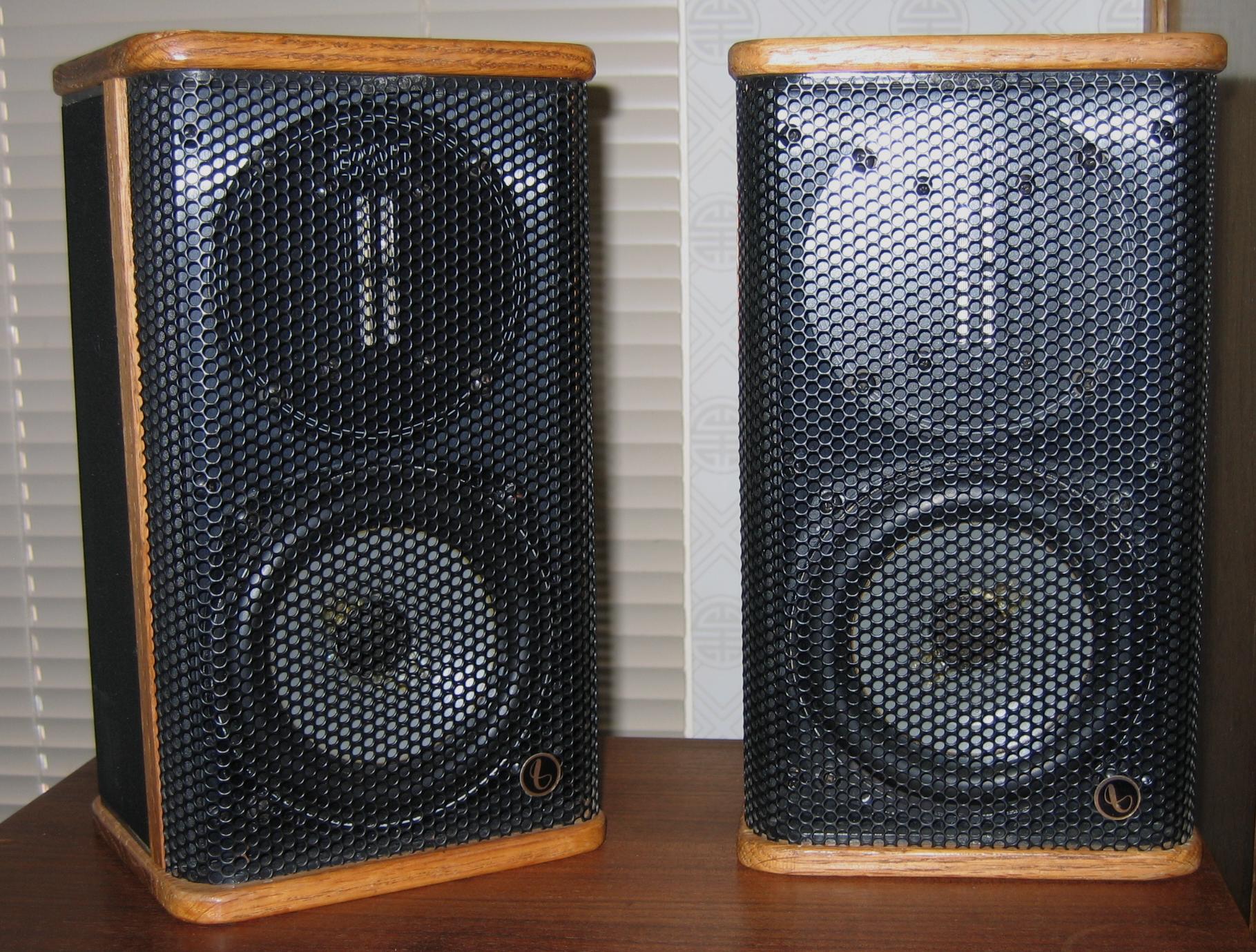 |
|||
RS-4.5/RS-2.5 |
|||
|
The first of the RS-series, the 4.5 was intended to be the top of the line replacement for the Quantum Line Source. Despite only abut 300 of them ever being produced, it received rave reviews and was the reference speaker for several audio magazines. It replaced the servo woofer of the Servostatik with the Watkins dual-coil woofer, giving it amazing bass. Those woofers also ate amps for lunch, so you need some serious amplification to get the best out of these. These are such great speakers I have two sets. The RS-2.5 was the little brother to the RS-4.5 - single woofer, two instead of 4 EMITs, two instead of 4 EMIMS. Still a fantastic sounding speaker. Infinity produced a number of variants on this speaker. To see some of them, go here. For a copy of the owner’s manual, go here. |
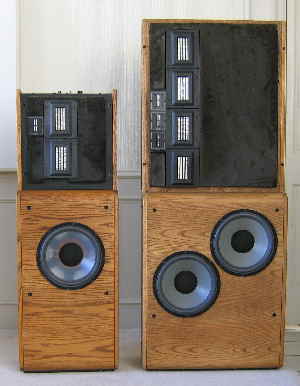 |
|||
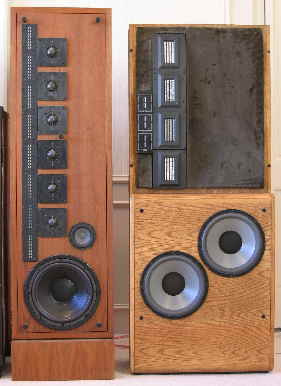 |
|||
|
|
RS-1 |
|
My all-time favorite Infinity speaker, the RS-1 was a scaled-down version of the mighty IRS V. Using a pair of mid/high columns and a pair of woofer towers, along with an active servo crossover for the bass towers, the RS-1 is a spectacularly good speaker. I have dual sets of woofer towers to make sure I never run out of bass. To see what’s involved in shipping these babies, go here. For a copy of the owner’s manual, go here. |
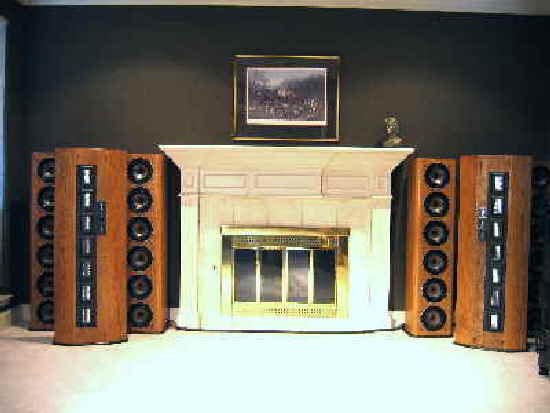 |
|||
RS-II/A/B |
|||
|
The RS-II was designed to be a lower end, smaller version of the RS-1. It’s a much less physically imposing speaker than the RS-1 but still sounds great. The early versions (the RS-II) used poly-coned midranges. The later version (the RS-IIA/B) switched over to EMIMs just like the RS-1, were bi-ampable, and came with a separate active crossover. I have both, and like them a lot. For a copy of the RS-IIB owner’s manual, click here. |
|
|
||||||||||||||||||||||||||||||||||||||||||||||||||||
|
The RS series was an entire line, based on similar design philosophies but getting progressively smaller and less complex as the model number went up. The line extended all the way to the RS-10. I only have one of these smaller Infinities, the RS-5 |
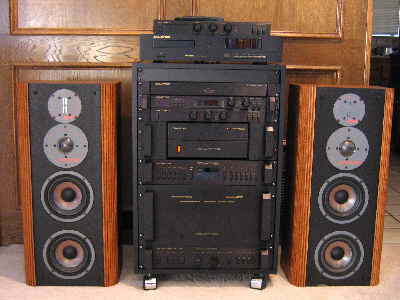 |
|||
IRS Beta |
|||
|
The IRS (Infinity Reference System) line was designed to supplant the high-end RS models. The flagship was the massive IRS V, at 1,400 pounds and seven feet tall, one of the largest consumer speakers made. The next step down was the Beta. Using the same four column design as the IRS V and RS-1, the Beta incorporated a new, larger midrange driver, the L-EMIM, based on the same concepts as the EMIM driver Infinity had been using since the RS-4.5 In the interests of building a less expensive, easier to place speaker, Infinity also came out with the Delta/Gamma, which was essentially a single column version of the Beta with fewer drivers. For a copy of the owner’s manual, click here. |
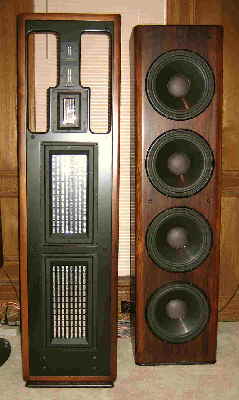 |
|||
Renaissance 90 |
|||
|
The Renaissance series (80 and 90) were introduced in 1990 and were an additional step in the Infinity evolution. They introduced new “High Energy” EMITs and EMIMs, changed the shape and packaging dramatically, and moved away from a dipole model. They came in oak, black, and a gorgeous piano-gloss black. I have the black but would really love a pair in piano gloss black - it’s a truly beautiful speaker. For a copy of the owner’s manual, click here. For a copy of a technical white paper on the Rens, click here. |
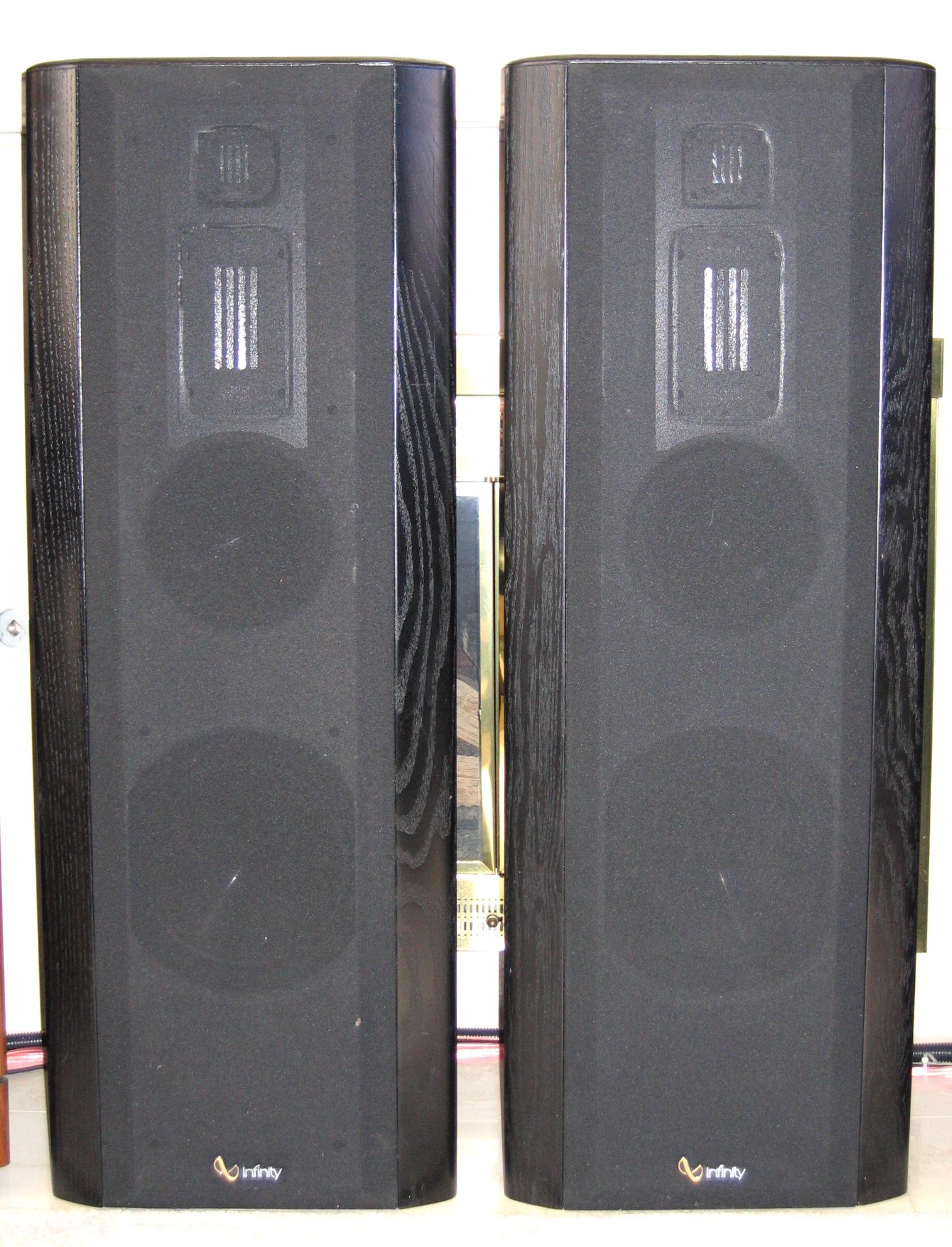 |
|||
Modulus |
|||
|
The Modulus was one of the last speakers produced by Infinity before it went mass-market. Intended to provide sound quality comparable to their bigger speakers in a much more compact package, the system consisted of a pair of satellite speakers, a servo-controlled, powered subwoofer, and a crossover to drive the subwoofer. At $3,000 (in 1990 dollars), it certainly wasn’t cheap, but the sound is amazing. Hard to imagine something this small can sound this good. |
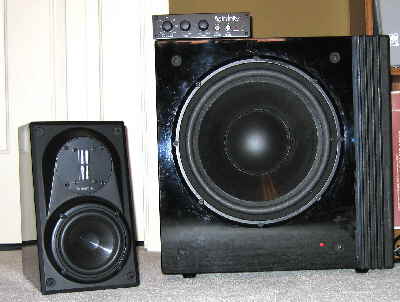 |
|||
IRS Epsilon |
|||
|
The Epsilon was the last of the truly top-of-the-line speakers produced by Infinity. Designed by John Miller and Cary Christie after Arnie Nudell had left Infinity, it was designed to be the heir to the IRS Betas, but in a more compact package that was easier to place in a room. The Epsilon was a departure for Infinity, in that, after many years of dipole speakers, it was sealed in the back and was (primarily) monopole. The Epsilon may be the most neutral speaker I’ve ever heard - no coloration of the music at all, just very clean, detailed sound. Its only shortcoming may be a lack of deep bass response, the result of trying to fit everything into a single cabinet. Overall, a lovely speaker. For a copy of the owner’s manual, click here. For a copy of a technical white paper on the Epsilons, click here. |
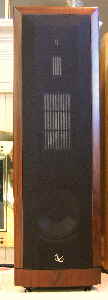 |
|||
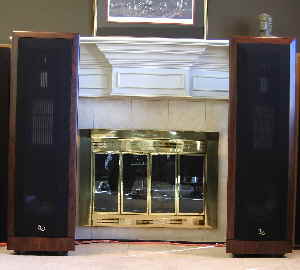 |
|||
|
|
Kappa 9 |
|
I finally got a pair of Kappa 9s, but the girl didn’t come with them - I think that was a special-order option. The Kappas were introduced in 1987 to be Infinity’s main product line, replacing the RS-series. They were a whole series, from the Kappa 5 to the Kappa 9 (the top of the line). In keeping with Infinity’s relentless innovation, they introduced new midrange drivers - the Polygraph and Polydome. The Kappa 9 was a five way speaker, with a reputation for killing amplifiers - its impedance curve drops below 1 Ohm at two different places. Not very forgiving of weak amplifiers. Nevertheless, it has a dedicated following of devoted fans, who love the outstanding bass from them. Subsequently, Infinity produced later generation Kappas (the X.1 and X.2) series that were supposed to tame the Kappas appetite for amps. |
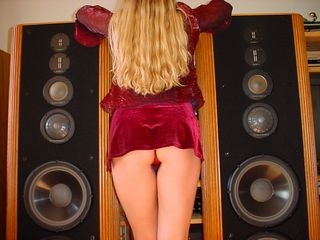 |
|||
Other Infinity Products |
|||
|
In their early days, Infinity attempted to manufacture and sell an entire range of audiophile products. The product line included amplifiers and preamplifiers, an air-bearing turntable and tonearm, electrostatic headphones and even a Walkman-like personal stereo. I have tried to collect as many of these as possible but am still missing some. To see them, go to Other Infinity Products. |
|
Contact me at: david@davidsaudio.com |
|
[Home] [SAE] [Infinity Speakers and Audio] [Infinity RS-1] [Infinity Variants] [Other Infinity] [GAS/SUMO] [Tubes] [Links] [Contact/Wanted] |